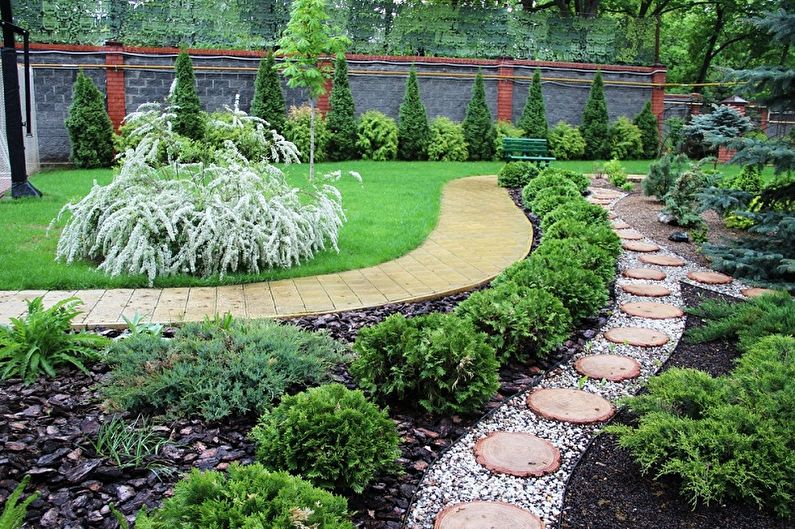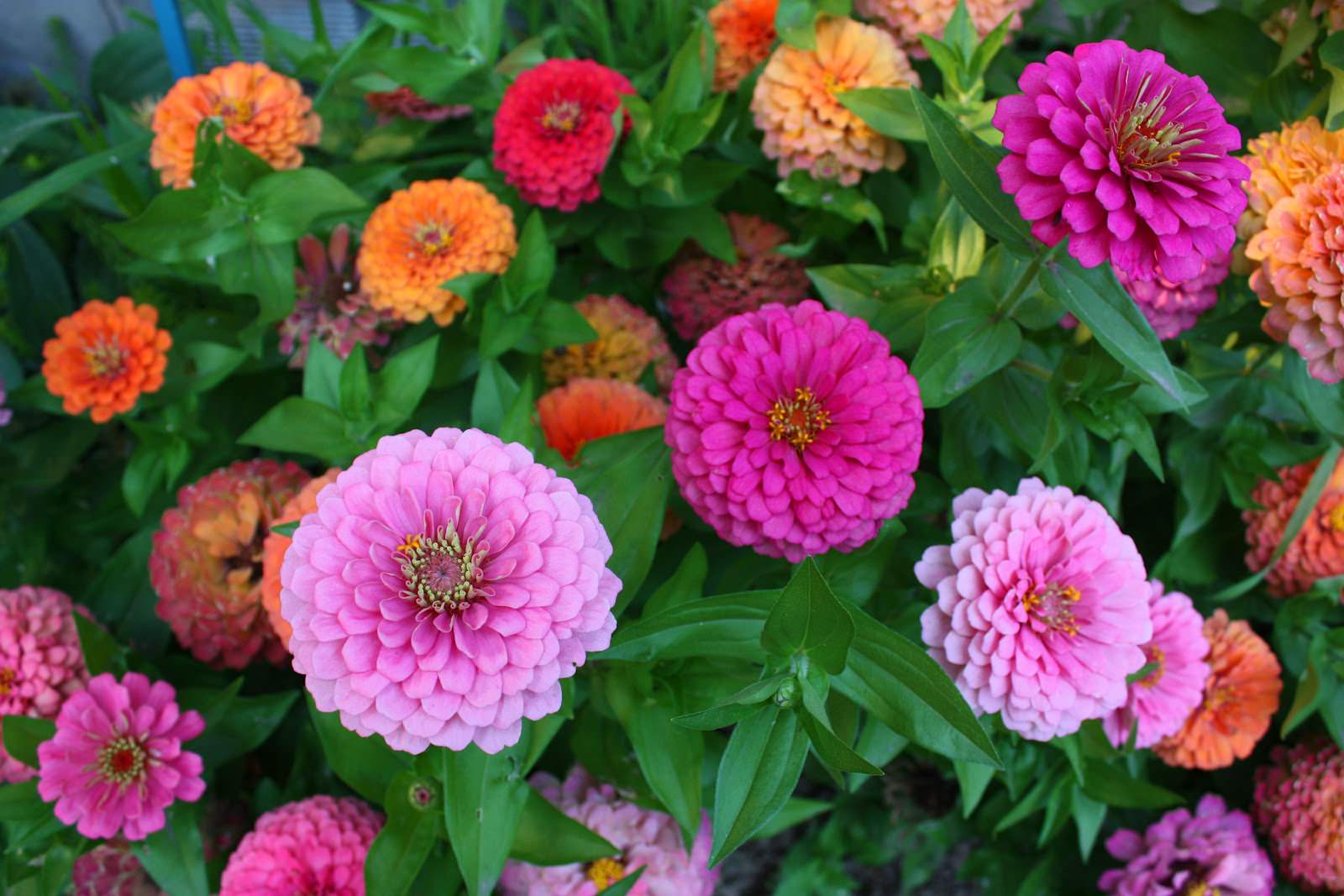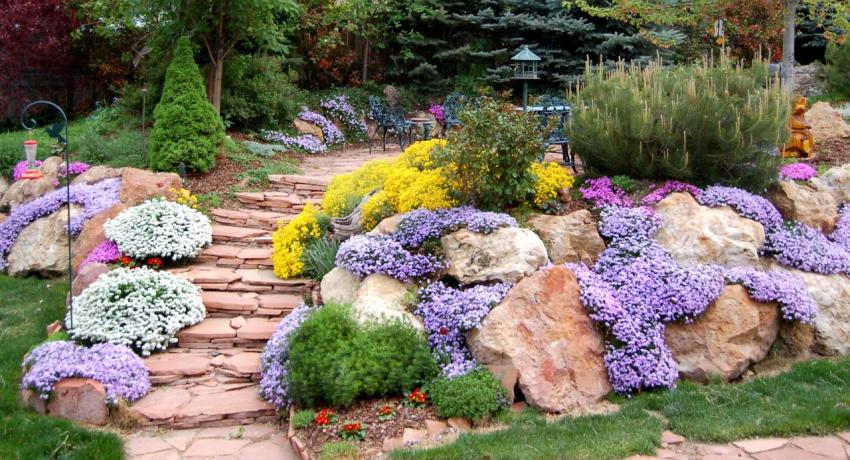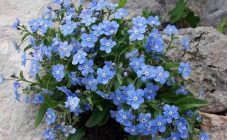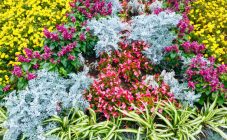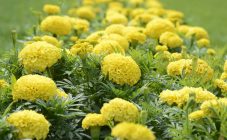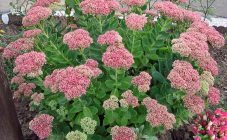Content:
A flower bed of stones, an alpine slide, is a way to create an original and beautiful landscape in the garden. To obtain a spectacular rockery, it is important to approach its creation with care and carefully think over all the nuances of its creation: from the choice of stones to varieties of plants and their color palette, compatibility with each other.
The basics of landscape design
When creating an alpine slide, you must adhere to the basics of landscape design, observing the steps:
- Planning and design. At this stage, it is necessary to carefully consider the location of the alpine slide, so that the result is a well-thought-out, stylistically complete and correctly located (in the most favorable perspective, in terms of irrigation, illumination, aesthetics) landscape.
- Choice of style. In order for the rockery as a whole to look harmonious and complete, all work must be done in the same style. For example, ultra-modern high-tech, restrained English, sophisticated French Provence, cozy oriental.
- The selection of plants is one of the most important steps in creating a flower bed from stones. Perennial flowers for an alpine slide will allow you to create a cozy corner and get rid of the problem of planting a plant composition annually. When selecting plants, the following features must be taken into account:
- Form, growth rate,
- Flowering period and colors,
- Climatic conditions,
- Features of care (watering, processing, compatibility).
- Creation of landscape structures. To complete the design, it is important to supplement the flower bed with small architectural structures (which need to be galvanized), they will become a decoration and addition to the garden, such as arches, lanterns, statues and sculptures, fountains, altans, etc.
In order for the site to end up looking beautiful and harmonious, it is not recommended to overload it with a large number of colors, designs and other elements. It is not recommended to use oxidized metal for arches and arbors; it is better to use natural wood, high-quality plastic, rattan. Without proper experience, you can overdo it and completely ruin the garden.
Flowerbeds of stones
A flower bed with elements of natural stone will decorate any flower garden and add style and beauty to the simplest garden.
The following types of stone are suitable for a flower bed of stones:
- Brick,
- Limestone,
- Pebbles,
- Multi-colored artificial stone.
Combining stones of various colors, texture and volume in a flower garden, you can get a stylish and original flowering slide.
For greater effect, a large stone boulder can be placed in the center of the slide, and smaller stones at the edges.
Perennial flowers
When choosing varieties of flowers, it is important to consider such nuances as:
- ¾ Short stature (since tall plants can shade the area, hinder the growth of light-loving flowers),
- ¾ Slow growth (fast growing plants can drown out the growth of other plants and spoil the overall appearance of the slide),
- ¾ Colors and compatibility of varieties.
Experienced landscape designers recommend the following varieties of perennial flowers for an alpine slide:
- Graceful Anticlea (Zygadenus) - bulbous plant with basal (bluish-green, long, narrow and hard) and stem (small, oblong, short-petiolate) leaves. Paniculate inflorescences, 30-50 cm in diameter. The flowers are light cream in color (white or yellowish), medium-sized (up to 2 cm), consist of 6 petals, half accrete at the base of the perianth. Flowering begins in early summer with small yellow-green flowers collected in a narrow paniculate inflorescence.
- Sizirinhium - a frost-resistant herb of the Iris family with small (depending on the variety, star-shaped or cup-shaped) flowers of a blue-violet shade with a yellow-orange stamen. Flowering begins in May-June.
- Hosta - a low (up to 30 cm) bush with dense leaves collected in an outlet. Leaves, depending on varietal characteristics (from light green to gray-blue shades), with white (yellow) stripes along the edge of the leaf plate. The flowers are funnel-shaped, white (purple). Flowering - mid-summer.
- Astilba - a sprawling bush with large openwork leaves of a dark green (bronze, burgundy) shade and up to 150 cm high with openwork leaves on reddish cuttings. The flowers are collected in panicle inflorescences up to 50 cm long. The color of the flowers, depending on the variety, is white, red, pink, purple. Blooms in June - early August (depending on the variety).
- Primula (primrose) - a perennial low plant with wide dark green leaves and small flowers with a pleasant aroma, collected in a panicle. Early flowering (mid February - early March). Flowers are double or semi-double creamy white, burgundy, lilac, orange shades.
- Edelweiss (Leontopodium, Leontopodium) - a dicotyledonous herb of the Asteraceae family (Compositae), 20-30 cm high. As it grows, the plant grows in width. The flowers are white (or pale yellow), odorless, clustered in dense baskets that make up the inflorescence. It blooms in garden plots from June to August. After the completion of flowering, it requires the removal of dry inflorescences to prevent the loss of decorativeness of the flower garden.
- Thrift - a herbaceous plant that forms dense sods on thin peduncles, above which balls of dense, bright inflorescences (pink, purple, purple, crimson) with a delicate pleasant aroma rise. Sod can reach a height of 15-25 cm, during the period of growth - up to 60 cm. A dense leaf rosette of narrow linear leaves is located above the soil surface. On a compact bush, up to 10 peduncles with spherical inflorescences similar to ornamental onions can form. Flowers are not afraid of a harsh winter. Flowering begins in May and lasts until the end of August.
- Alissum rocky - a low shrub up to 25 cm high. Small racemose flowers of white (pale lilac, pink) color merge into lush inflorescences and, during flowering, completely cover the site defects (cracks in the soil, cracks between stones, holes, irregularities). They have a delicate sweetish aroma.
- Echinacea - a medicinal herb with large bright flowers similar to chamomile. Flowers can be bright crimson, pink, white, orange. Flowering begins in the second decade of summer. It is an excellent honey plant.
- Lavatera (dog rose) Is a rhizome flowering plant with lobed leaves covered with fine villi. The flowers are large, up to 10 cm in diameter, pink in color.
How to make an alpine slide
To create a rock garden with your own hands, you must follow the step-by-step stage in the design:
- ü Choose the most suitable landing site.
- ü Cover prepared soil with crushed stone or gravel. Then make drainage from pebbles or sand, add fertile soil.
- ü Arrange stones (boulders) in the desired order, giving relief and volume to the slide.
Interesting. A car tire can be used as an additional element in the center of the composition.
- ü Between the stones, fill a layer of soil and plant the plants in this order: first, tall plants are planted, then lower ones. When planting, it is necessary to take into account the compatibility of shades and colors with each other.
You can create compositions at your own discretion, or order a ready-made composition. A flowerbed, a slide, made of stones with their own hands, pleases the eyes of the owner, who himself was able to decorate the garden.
Flower garden care
In order for the flower bed to grow and bloom profusely, a number of conditions must be observed:
- You need to plant flowers in early spring,
- Timely remove dry stalks, weeds that thicken the planting of the plant,
- Weeding the soil
- Mulch the soil for better aeration,
- Normalize the irrigation system,
- Spray against diseases and pests,
- In autumn, cut off all plants that have not preserved shoots to the soil level,
- For better wintering, the flower garden can be covered for the winter with a layer of agrofibre,
- Do not use fruit bushes (strawberries, wild strawberries, raspberries, currants) for the rock garden.
The name of the alpine slide speaks for itself. This is an artificially created slide of stones, between which flowering plants and shrubs are planted. The main purpose of the rock garden is to decorate the garden area.
